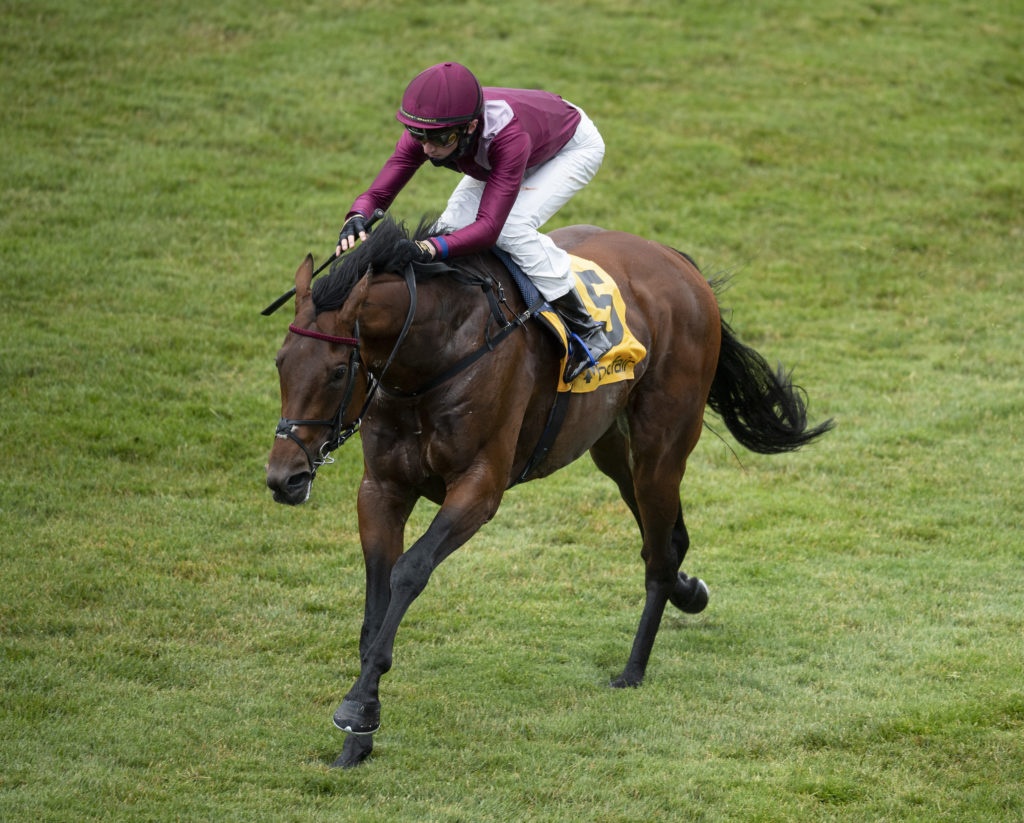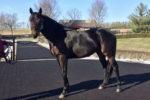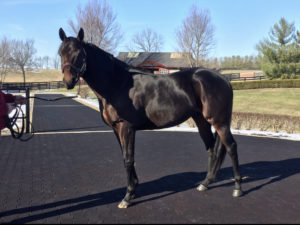If asked to generalise about what constitutes a typical dirt horse, I would venture that a big, powerful, strong-galloping horse with a high cruising speed is ideal. In other words, something in the mould of the latest Triple Crown winner Justify, who combines considerable size and substance with the ability to lead throughout if required.
Contrastingly, Dubawi would be much more a turf type. Medium-sized at best, with his high withers helping him measure 15.3 hands, Dubawi has the neat frame and the musculature suggestive of a horse suited to quickening at the end of his races. He also displayed an action which Timeform described as short and choppy. But few rules in horse breeding are hard and fast and Dubawi’s name has been linked to several important dirt runners this year.
It was his grandson Make Believe who sired the highly admirable Mishriff, winner of the hugely valuable Saudi Cup over Riyadh’s much-admired dirt track. Dubawi was also directly responsible for a few black-type winners over Meydan’s dirt course, with Military Law becoming a Group 2 winner in Round 1 of the Al Maktoum Challenge, Soft Whisper taking the Listed UAE 1,000 Guineas on her dirt debut and then Rebel’s Romance wore down Panadol to easily take the Group 2 UAE Derby in March.
Needless to say, these winners aren’t the first big winners on dirt for Dalham Hall Stud’s star stallion. His veteran son Prince Bishop defeated California Chrome to land the Dubai World Cup (a race which was contested on Tapeta when it fell to Monterosso, another of Dubawi’s sons). Yet another son, Mubtaahij, won the Group 2 UAE Derby and was second in the Dubai World Cup before being transferred to the US, where he landed the Grade 1 Awesome Again Stakes.
While Dubawi’s physique may suggest that he’s an unlikely sire of dirt horses, his pedigree tells a somewhat different story. He is, of course, a son of Dubai Millennium, a mighty performer in more than one sense of the word. In Rachel Pagones’ book about Dubai Millennium, David Loder was quoted as saying his first impression of the Seeking The Gold colt was that he was too big.

Mishriff: showed great versatility to capture the Dubai Sheema Classic and the Saudi Cup. Photo: Edward Whitaker/Racing Post
“You get a great big horse like that, mostly they’re no good. It might make a nice jumper or something. But normally they’re just too big to cope with Flat racing, or to be any good at it.” The story goes that the two-year-old colt – then called Yaazer – initially reminded his then-trainer of a heavyweight hunter, but this impression was to change considerably during the second half of the youngster’s juvenile season.
Dubai Millennium was to win his only start for Loder by five lengths, before being transferred to the care of Saeed bin Suroor. In a magnificent career which included only one disappointing effort, when favourite for the Derby, Dubai Millennium was to boost his career figures to nine wins from ten starts.
Possessing an extraordinary cruising speed, he proved just as effective over Nad Al Sheba’s sandy dirt track as he had been over Europe’s turf courses. After dipping below two minutes in easily winning his preparatory race, Dubai Millennium turned in a monster performance in the Dubai World Cup, soon pulling his way to the front on his way to inflicting an awe- inspiring six-length defeat on the highly consistent American horse Behrens. This time Dubai Millennium stopped the clock at 1:59.50 for the mile and a quarter.
So dirt definitely held no fears for the son of Seeking The Gold, a horse whose career figures stood at eight wins and six seconds in his 15 starts, all on dirt. Dubai Millennium had other dirt horses as his sire (Mr Prospector) and grandsires (Raise A Native and Buckpasser). And, although Dubai Millennium’s dam Colorado Dancer and Dubawi’s dam Zomaradah were both smart winners on turf, they too possessed bloodlines which had found fame on American dirt.
Among their ancestors were Northern Dancer, Never Bend, Hail To Reason, Raise A Native and Sir Gaylord, so perhaps it isn’t so surprising that Dubawi should sire the occasional impressive performer on dirt – especially when a number of his best winners seem to have inherited some of Dubai Millennium’s tallness.
It will be interesting to see whether Rebel’s Romance can maintain his progress if he’s sent to take on the best American three-year-olds. Now a winner of four of his five starts, his options are somewhat limited – rightly in my opinion – by his being a gelding. Why should the Classics – which are meant to offer a level playing field – be open to animals which, presumably because of temperament or physical problems, needed to be gelded in order to show their full talent?
The Americans don’t share my objections, though, and Rebel’s Romance could theoretically have targeted the Kentucky Derby, having earned 100 qualifying points for his success in the UAE Derby. However, trainer Charlie Appleby believes the gelding needs more time, hence the substitution of the Belmont Stakes as his likely target.



